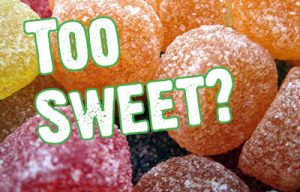Once sugar was a harmless little luxury enjoyed only on special occasions. These days many of us consume far too much.
Last year New York City Mayor Michael Bloomberg made international headlines when he tried to introduce a public health initiative banning chain restaurants from selling super-sized soft drinks. He cited evidence linking soft drinks to childhood obesity and type 2 diabetes.
The ban was blocked in court but Mayor Bloomberg isn’t the only one concerned about sugar consumption. The World Health Organization (WHO) is considering halving the amount of daily calories from sugar it recommends people consume, from 10 to 5 per cent.
A study published in the Journal of the American Medical Association found people who get 17 to 21 per cent of their daily calories from added sugar have a 39 per cent higher risk of dying from cardiovascular disease than those who get just 8 per cent.
In recent years the work of British physiologist John Yudkin has also gained more credence. Yudkin believed fructose – found in nearly all added sugars – is linked to insulin resistance, which is a factor in diabetes.
A study at the Australian National University found people whose blood sugar levels are at the higher end of normal could be at greater risk of the brain shrinkage that occurs with dementia. Higher blood sugar levels within the normal range accounted for 6 to 10 per cent of brain shrinkage.
OUT OF SIGHT
“People don’t realise there are hidden sugars in their foods,” says accredited practising dietitian and spokesperson for the Dietitians Association of Australia Julie Gilbert. “Sugar provides energy but it contains no vitamins, minerals or fibre. Eat too much of it without burning it off and that contributes to weight gain, which can then lead to health problems like heart disease and diabetes.”
As with all things in our diet, sugar in moderation is not harmful. However, keeping track of your sugar intake takes effort. The key is to know the range of ways in which sugar can be listed on food labels and to cut back on processed foods and soft drinks that tend to be high in sugar. Look for foods that contain no more that 0 to 15 grams of added sugar per 100 grams.
“Many people don’t realise there is sugar in soft drink, cordial, fruit juices, sports and energy drinks and flavoured milk,” Gilbert says. “You don’t need to eliminate sugar, but find the hidden sources of sugar in your diet and only have it in moderation.”
IN DISGUISE
Naturally occurring sugars are found in fruit (fructose) and milk (lactose). Added sugars are sugars or sweeteners added to foods or drinks during processing or preparation and they can be “hidden” on food labels as honey, high fructose corn syrup, raw sugar, fruit juice concentrate, malt sugar, dextrose, fructose, glucose, lactose, maltose or sucrose.



